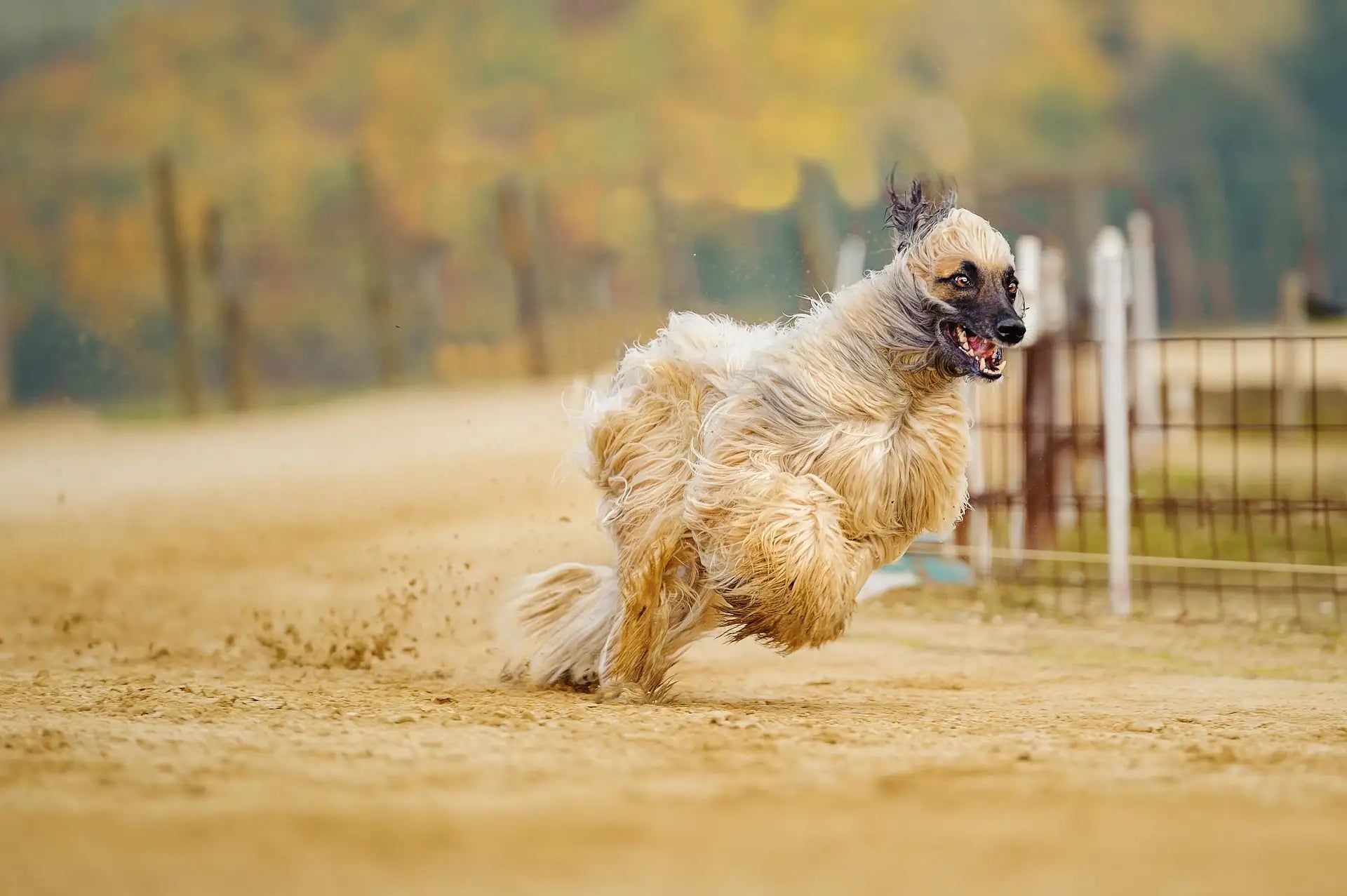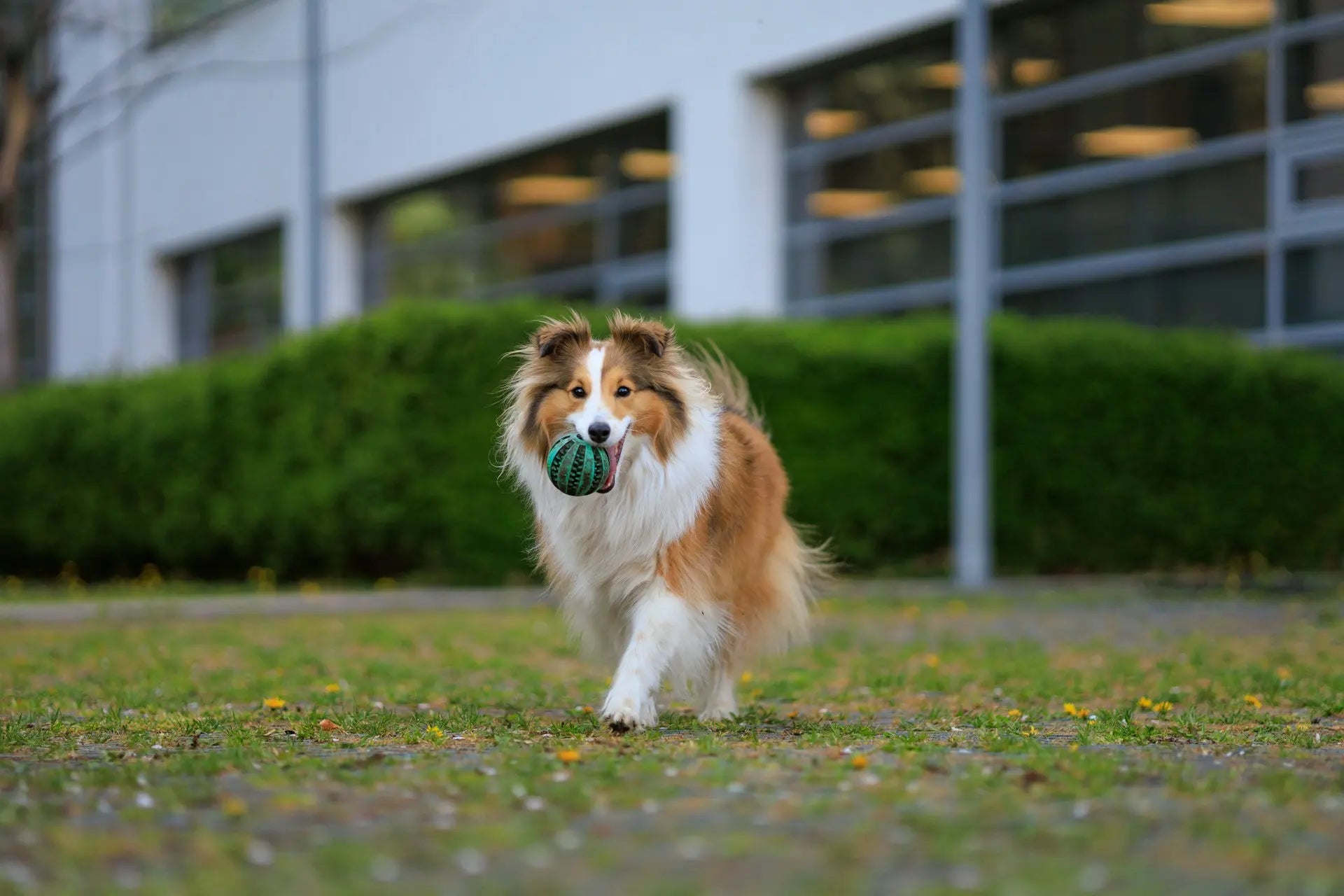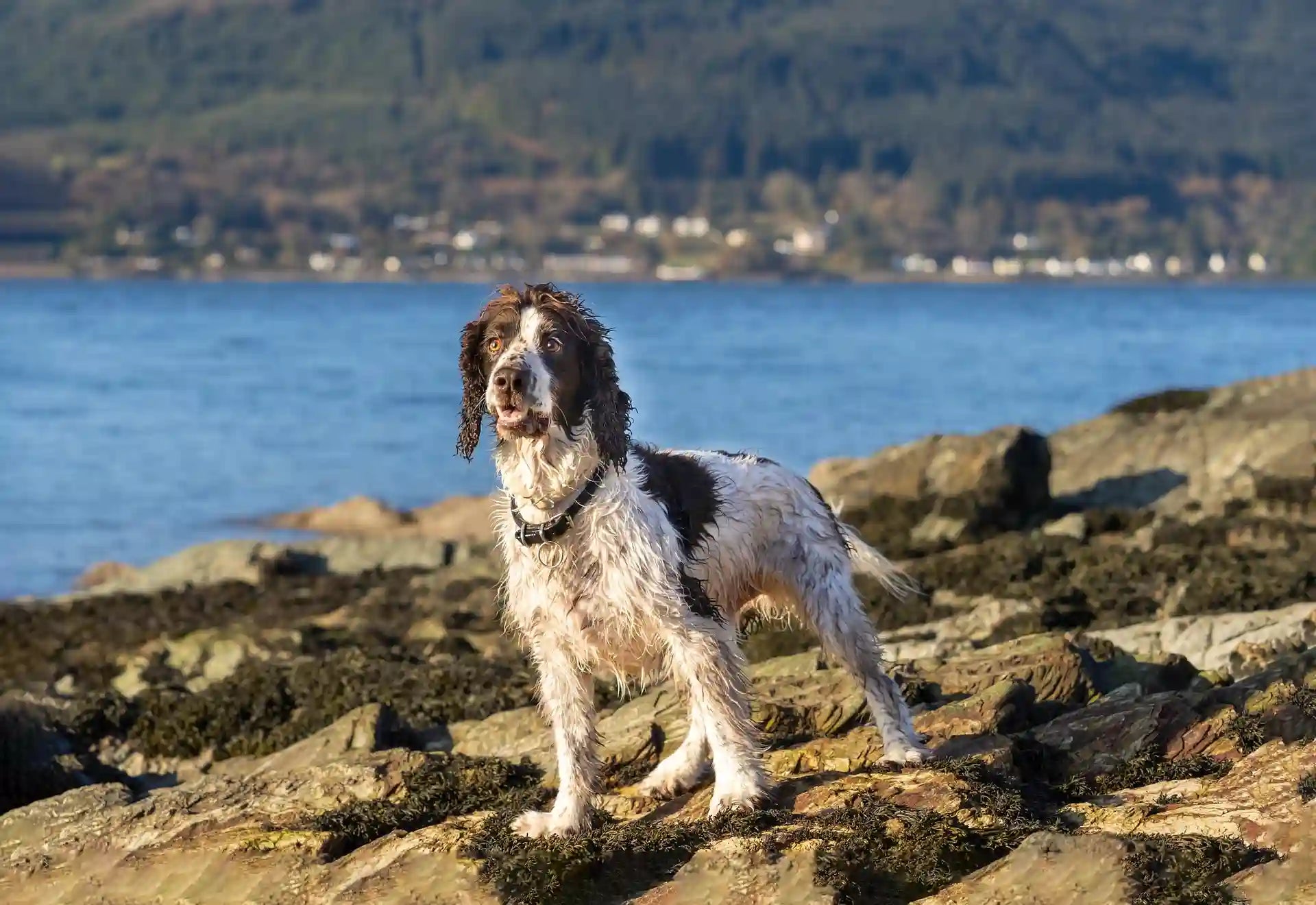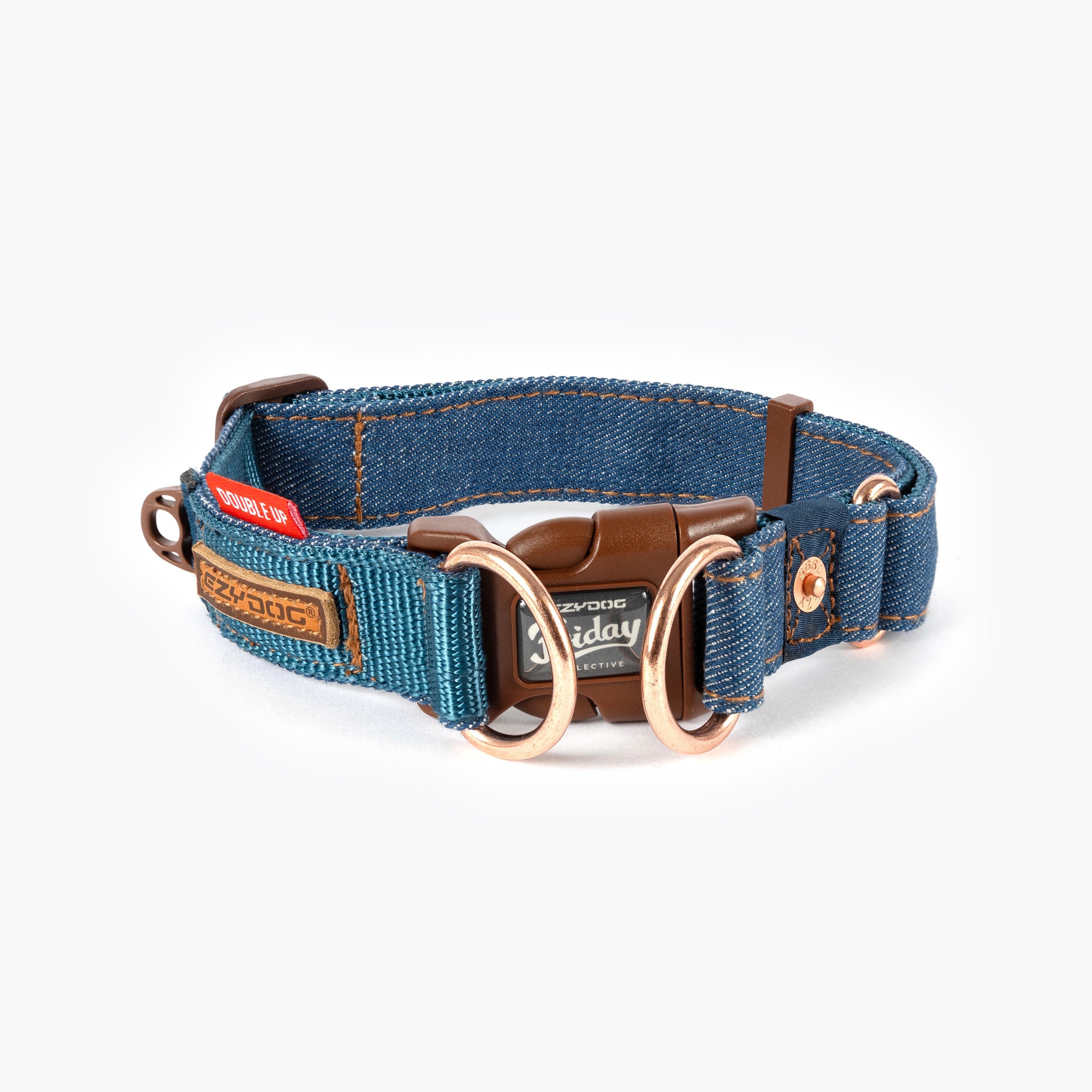
Afghan Hound Dog Breed: History, Care, Training & Health Insights
The Afghan Hound is one of the most elegant and distinctive dog breeds in the world, admired for its long, flowing coat and aloof yet loyal nature. While they may look regal and reserved, Afghan Hounds are athletic, independent, and surprisingly affectionate with their trusted people.
If you're considering this breed, this guide answers the most common questions to help you understand what it’s like to live with an Afghan Hound.
Quick Facts Overview
|
Trait |
Details |
|
Size Category |
Large |
|
Height & Weight |
Height: 61–74 cm; Weight: 20–27 kg |
|
Coat Type & Colours |
Long, fine, silky coat; many colours including black, cream, red, blue |
|
Energy Level |
Moderate to High |
|
Origin |
Afghanistan |
|
Grooming Needs |
Very High |
|
Temperament |
Aloof, dignified, independent, affectionate with family |
|
Trainability |
Moderate |
|
Compatibility |
Best with experienced dog owners |
|
Lifespan |
12–15 years |
Breed Origins and History
The Afghan Hound's history stretches back thousands of years to the deserts and mountains of Afghanistan. Originally bred by nomadic tribes for hunting large game like leopards and gazelles, their speed, agility, and keen sight made them highly valued. Afghan Hounds eventually captivated the Western world with their regal appearance and were among the first breeds exhibited at European dog shows. Today, they are celebrated for their beauty, athleticism, and unique temperament.
Personality and Temperament
The Afghan Hound carries itself with an air of independence and dignity. They can be aloof with strangers but form deep, affectionate bonds with their families. Sensitive and intelligent, Afghan Hounds appreciate gentle handling and respectful companionship. While not typically “clingy,” they enjoy being near their loved ones and often have a playful, silly side that comes out at home.
Trainability and Intelligence
Afghan Hounds are highly intelligent but independent thinkers, which can make training a challenge if approached incorrectly.
-
Start training early with patience and consistency
-
Use positive reinforcement — treats, praise, and play are key
-
Avoid harsh corrections; these sensitive dogs respond best to gentle guidance
-
A comfortable training harness provides control without restricting their elegant movement
-
Carry rewards easily in a treat bag during training sessions
Exercise and Activity Requirements
Despite their calm indoor demeanour, Afghan Hounds are natural athletes who need regular exercise to stay fit and happy.
-
45–60 minutes of daily exercise
-
Enjoy long walks, free runs in secure areas, and lure coursing games
-
Mental stimulation like scent games and gentle training challenges are important
-
A reliable hands-free lead makes outings smoother
-
Supervised off-leash time in securely fenced areas is ideal
Physical Characteristics
Afghan Hounds are one of the most visually recognisable breeds, exuding grace and beauty.
-
Height: 61–74 cm
-
Weight: 20–27 kg
-
Coat: Long, silky, fine-textured coat
-
Colours: Wide variety including black, cream, red, blue, brindle
-
Best suited for large dog gear
Living Environment Suitability
Afghan Hounds adapt well to various homes but need enough space to stretch their legs.
-
Best suited for homes with large, secure yards
-
Apartment living possible with high daily exercise commitment
-
Prefer a quiet, stable home environment
-
Relax best on a luxurious orthopaedic dog bed
-
Ensure car safety during travel with a sturdy dog car harness
Grooming and Maintenance
Their breathtaking coat requires significant grooming commitment.
-
Brush thoroughly 3–4 times a week to prevent matting
-
Bathe every 2–3 weeks to keep the coat clean and soft
-
Regular ear cleaning is important due to their long ear leather
-
Trim nails monthly
-
Use a lightweight soft collar to protect their delicate coat
Common Health Issues
Afghan Hounds are generally healthy but can be prone to some breed-specific issues.
-
Common concerns: hip dysplasia, cataracts, hypothyroidism
-
Sensitivity to anaesthesia and some medications (due to low body fat)
-
Maintain joint health with supportive bedding like an orthopaedic dog bed
-
Schedule regular vet visits for early detection
Diet and Feeding Guidelines
Proper nutrition supports their slender build and active lifestyle.
-
Puppies: Feed 3–4 meals daily to support growth
-
Adults: Feed 2 balanced meals daily, watching for healthy weight maintenance
-
Choose high-protein, moderate-fat foods for lean muscle maintenance
-
Always provide fresh, clean water
-
Portable food and water bowls are handy for travel
Compatibility with People and Other Pets
Afghan Hounds are affectionate with family but reserved around new people.
-
Best suited to families who appreciate independent dogs
-
Can live peacefully with other dogs, especially other sighthounds
-
Early socialisation is important for confidence and manners
-
Manage multiple dogs easily with a coupler lead
Behavioural Issues and Management
Without proper exercise and stimulation, Afghan Hounds may become bored and aloof.
-
Need regular mental and physical outlets
-
May chase small animals due to high prey drive — keep secure fences!
-
Use a no-pull harness to manage their athletic energy during walks
-
Rotate durable toys to keep them mentally engaged
Essential Gear for Afghan Hounds
Walking and Training
Comfort and Rest
Fun and Enrichment
FAQs: Afghan Hound Dog Breed
1. Is an Afghan Hound a good pet?
Afghan Hounds can be wonderful pets for the right owner. They are elegant, independent, and loyal, though not as eager to please as some other breeds. They thrive in calm, patient households where they are given space, gentle handling, and regular grooming.
2. Are Afghan Hounds high maintenance?
Yes, Afghan Hounds are considered high maintenance. Their long, silky coats require daily or near-daily brushing to prevent tangles and mats. They also need regular bathing, and their independent temperament requires consistent but gentle training.
3. Can Afghan Hounds be left alone?
Afghan Hounds are quite independent and generally cope better alone than many breeds. However, like any dog, they can develop behavioural issues if left without mental stimulation or company for extended periods. Training and routine help them handle alone time better.
4. Why are Afghan Hounds so expensive?
Afghan Hounds are expensive due to their rarity, grooming needs, and breeding costs. Reputable breeders invest in health testing and careful pairings to maintain the breed's unique coat, structure, and temperament. Show-quality lines are particularly costly.
5. Do Afghan Hounds bark a lot?
Afghan Hounds are not known to be excessive barkers. They tend to be more aloof and reserved. While they will alert their owners to something unusual, they are typically quieter than many other breeds.
6. Are Afghan Hounds aggressive?
Afghan Hounds are not typically aggressive. They are generally aloof with strangers and sensitive by nature. Early socialisation helps ensure they remain calm, tolerant, and well-mannered with other pets and people.
7. Are Afghan Hounds good house dogs?
Afghan Hounds can adapt well to indoor life as long as they get daily exercise. They enjoy lounging in a quiet space and are often surprisingly laid-back indoors. A secure yard or daily walks are essential to keep them healthy and happy.
8. Are Afghan Hounds cuddly?
Afghan Hounds are affectionate but not overly clingy or cuddly. They often show their love in subtle ways and prefer to stay close without being overly demonstrative. Each dog is different, and some may enjoy close contact more than others.
9. Do Afghan Hounds have health problems?
Like many purebred dogs, Afghan Hounds can be prone to certain health conditions. These may include hip dysplasia, cataracts, hypothyroidism, and sensitivities to anaesthesia. Regular check-ups and working with a responsible breeder help reduce risks.
10. What is the life expectancy of an Afghan Hound?
Afghan Hounds generally live between 12 and 15 years. With good nutrition, exercise, and proper grooming, many live long and healthy lives well into their teens.
Final Thoughts
Afghan Hounds are a unique combination of beauty, grace, and independence. They require dedicated grooming and patient training, but for those who appreciate their aloof charm and elegant presence, they make rewarding companions. With the right care and environment, an Afghan Hound can bring both sophistication and quiet loyalty into your life.
Want to find the perfect gear for your Afghan Hound? Visit EzyDog for premium-quality products crafted for elegant, athletic dogs like the Afghan Hound.




Leave a comment
This site is protected by hCaptcha and the hCaptcha Privacy Policy and Terms of Service apply.